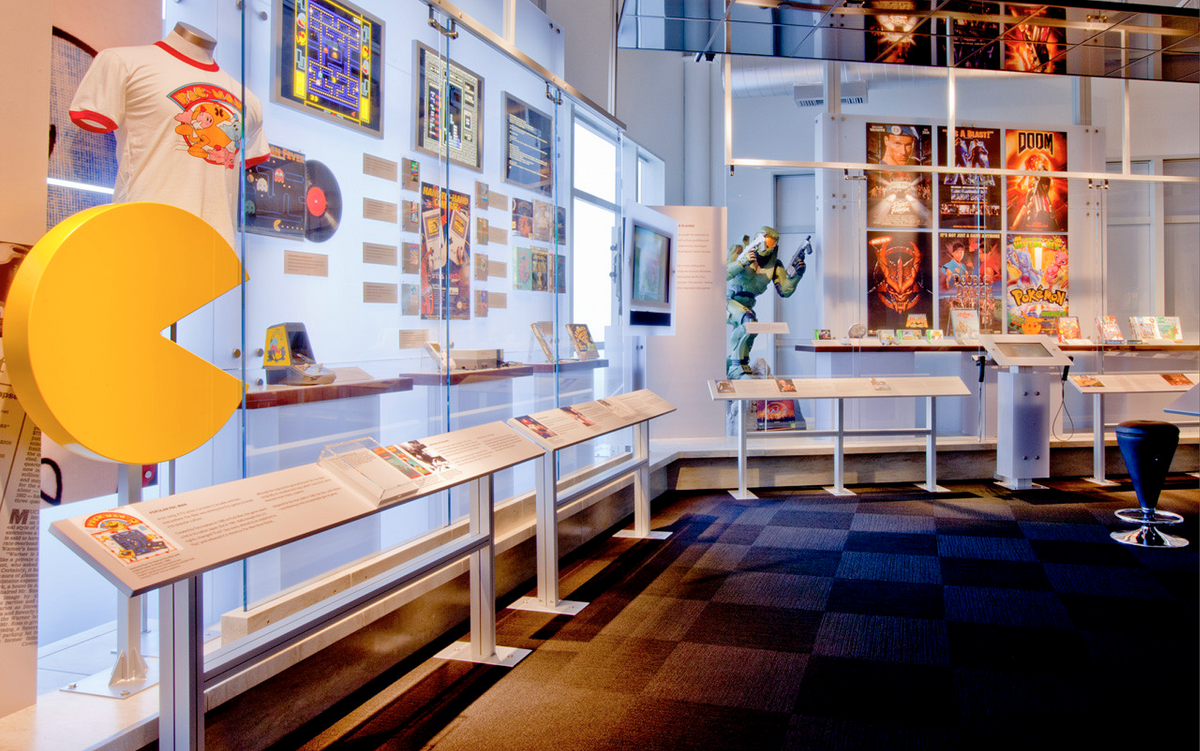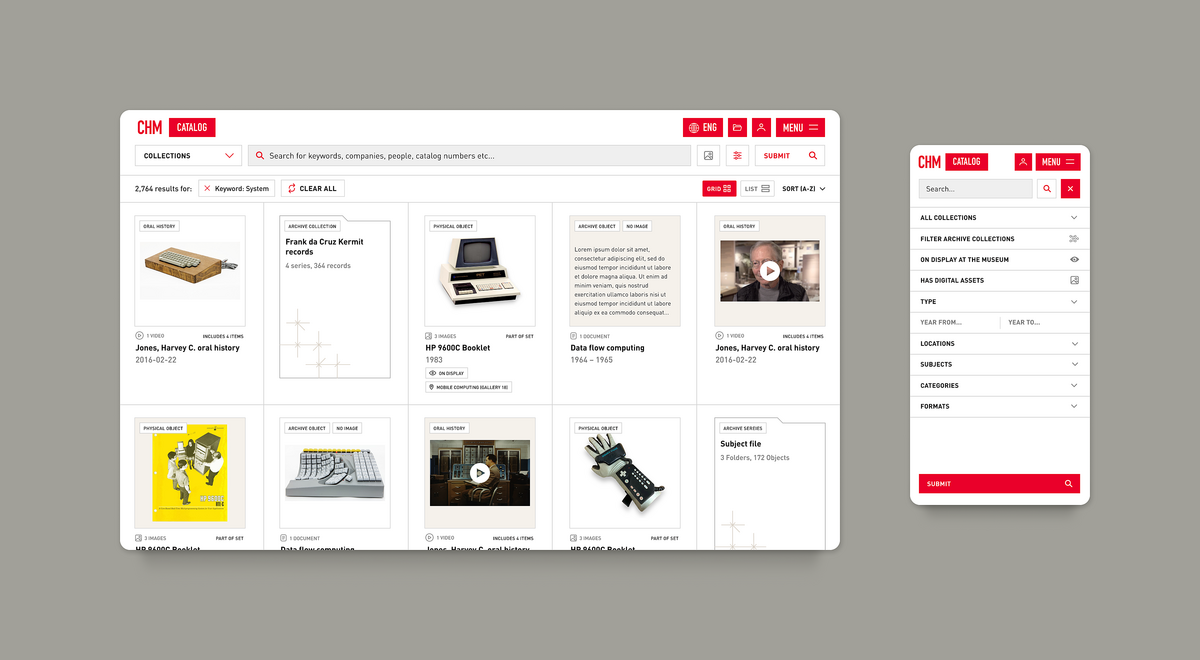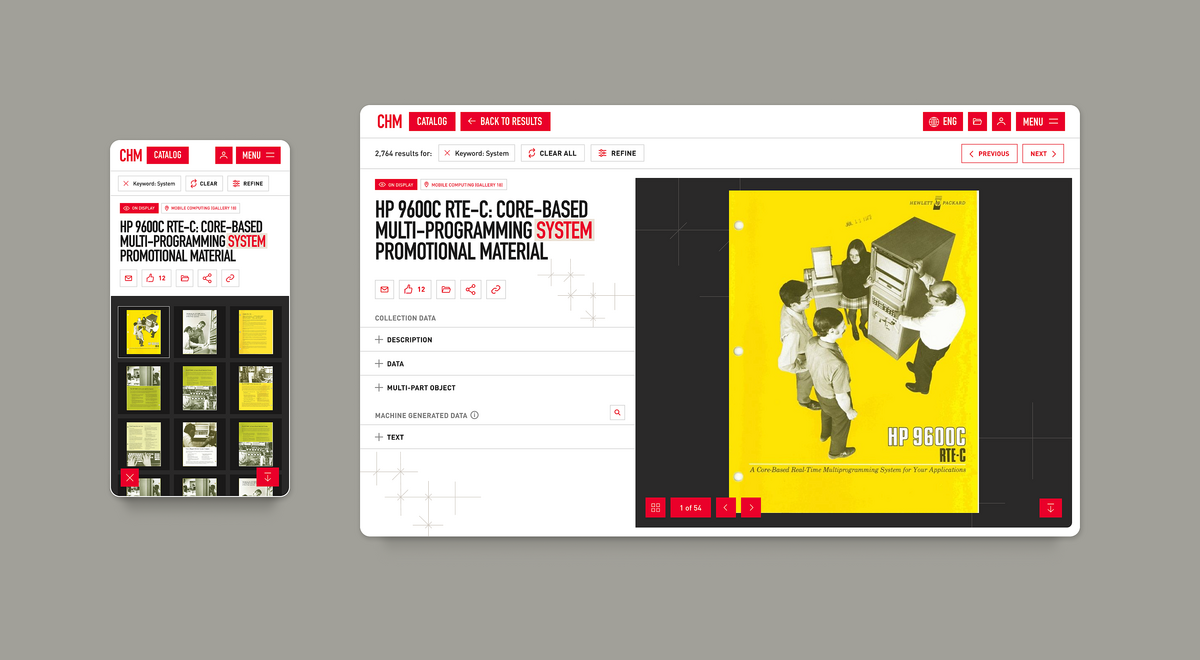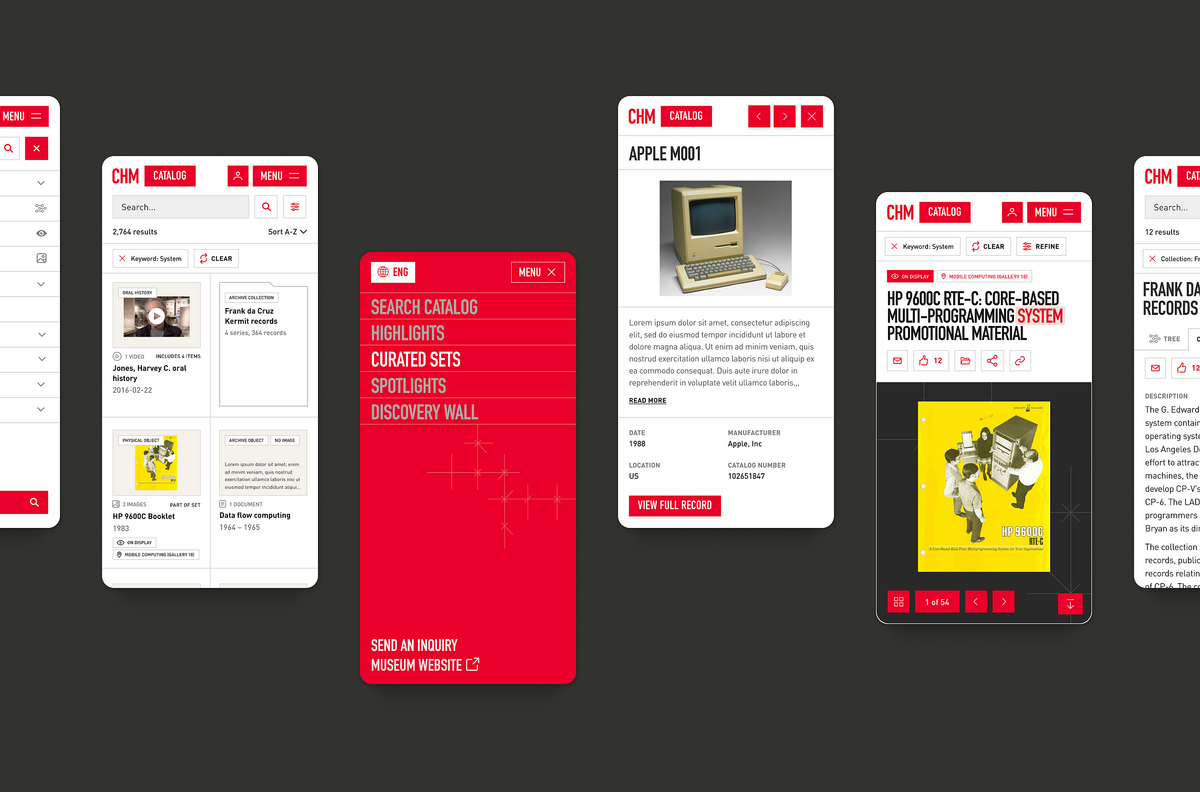Computer History Museum
Explore the Computer History Museum’s redesigned Collections website, where innovation meets accessibility. With a fresh, modern interface and powerful search tools, the site offers streamlined access to over 100,000 artifacts, photographs, documents, and media that chronicle the history of computing.
CMS, Information Architecture, Wireframes (UX/UI), Art Direction, Development, Accessibility
Visit website
The Computer History Museum in Silicon Valley is home to the world's largest collection of computing artifacts. Over 15 months we collaborated with their team to migrate their collection data from a legacy system into Qi and to redesign and relaunch their public collections catalogue, delivering a powerful new interface that reflects the scope, depth, and significance of their holdings.
The site is fully responsive and mobile-optimised, and provides visitors with rich tools for discovery, storytelling, and research; while remaining flexible enough to evolve with the museum's ambitions.

Discovery Wall
An immersive tool for guiding audiences on a selection of highlighted objects in the collection, the discovery wall is an image-focused wall of nostalgia. It offers a scroll on two-axis and displays a focused view on click, revealing interconnections with other featured objects.
The collection
The new website unifies three key areas of the collection - Archive, Physical Objects, and Oral History - each with its own landing page. Users can browse archival hierarchies, explore detailed object records, and listen to fully transcribed oral histories. A unified search experience makes it easy to discover content across all sections.

Searching
The search interface lets users explore over 150,000 items with predictive search and dynamic filters for type, date, format, and subject. Transcriptions from audio, video, and PDFs - generated by WasabiAiR and imported into Qi - are fully indexed, making spoken and scanned content searchable alongside traditional metadata. This integration of human and machine-generated data significantly expands access across media formats.

Curated browsing
Highlights display a curated introduction to some of the museum's most significant holdings. Highlights are hand-selected by curators and updated regularly, providing an engaging entry point into the collection.
-
Curator Picks presents themed selections from the collection; such as Women in Computing; or Startups in Silicon Valley; designed to provide fresh perspectives on the collection and foster deeper engagement.
-
Stories given an editorial space offers long-form content and narrative context for key collection items, with embedded media, quotes, and archival imagery. Stories are linked directly to objects and media within the collection.

The new catalogue is a major step forward for the museum's digital access strategy. It balances scholarly depth with public accessibility and sets the stage for future digital storytelling, exhibition support, and educational use. Built on Qi, it gives the museum long-term flexibility to manage content, metadata, and relationships across formats.
